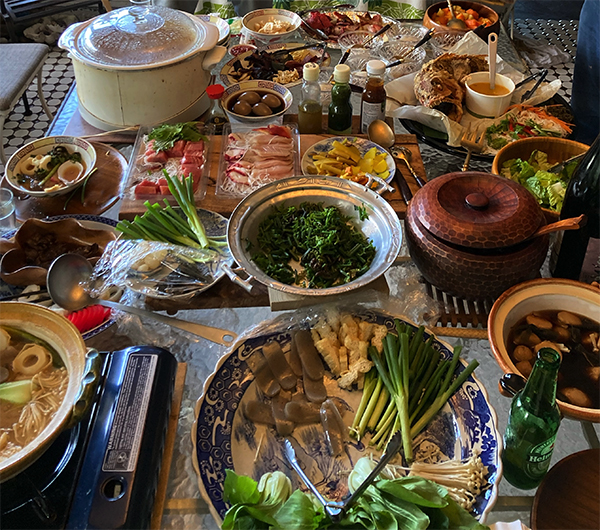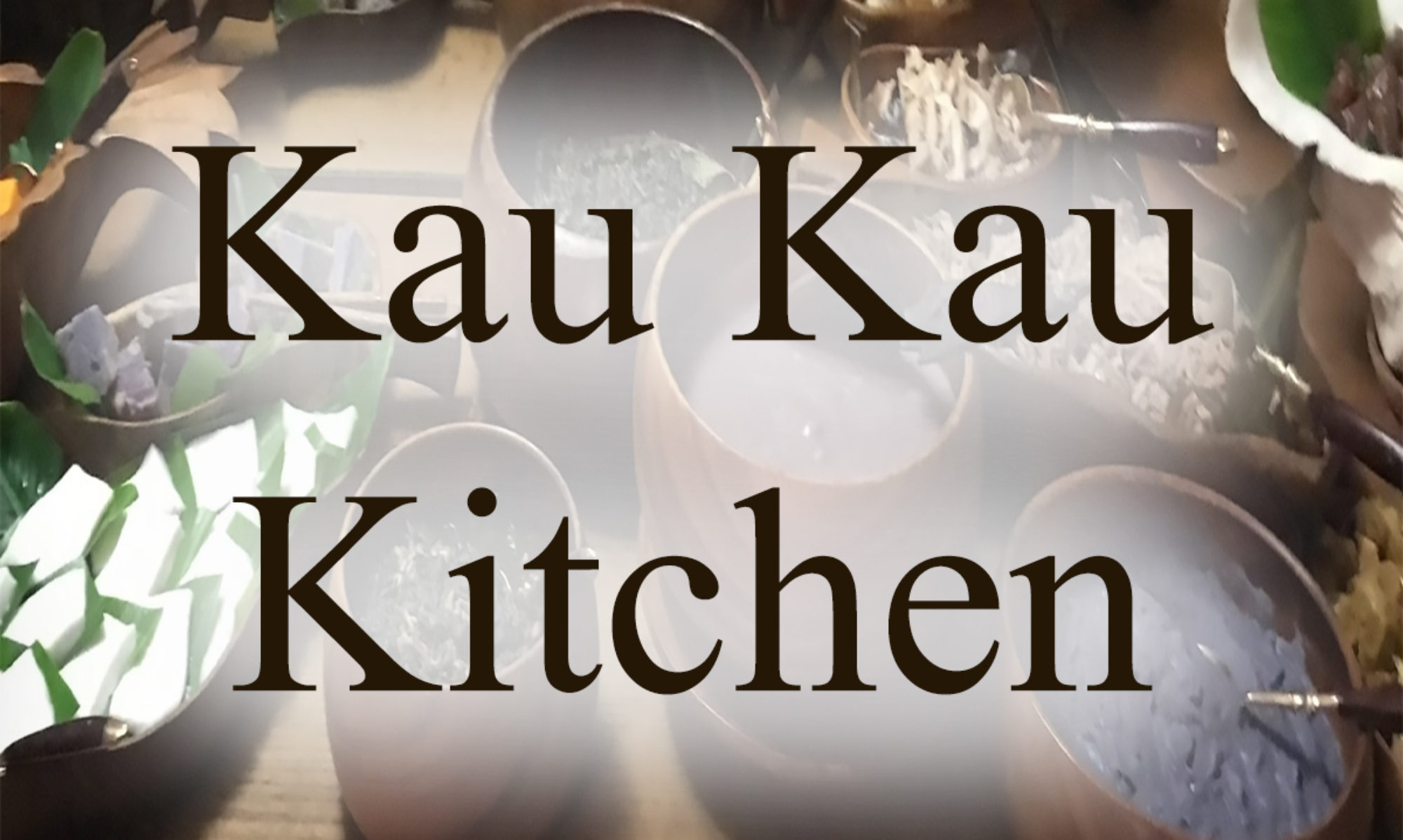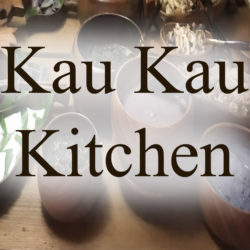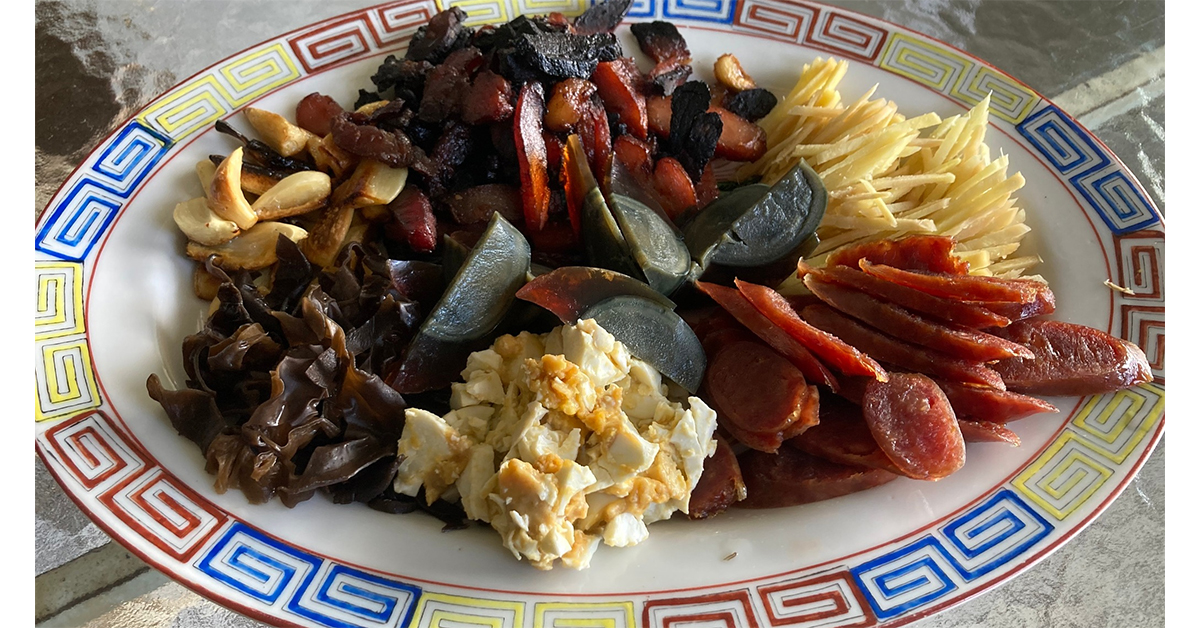Chinese people began arriving in Hawaiʻi only a decade after Captain James Cook logged our presence on English charts. Over the next two-hundred-some years, many people from all parts of China have come to our islands. They came as skilled craftsmen and fabricators working on projects from cannons and ships for Kamehameha. They came as engineers, crafting and maintaining the machinery for sugar and rice plantations. They came as agriculturalists and businessmen, improving crop yields and accounting practices. They came as laborers and built railways and waterways which helped the rise of Hawaiʻi in economic importance. They came as merchants, buying and selling, helping to drive the rapidly growing economy of the island kingdom. They came as artists, adding beauty to our cities and homes.
Along with their many public accomplishments, they also brought the foods and recipes of their various home villages, towns, and cities, adding to our local culture, combining recipes and ingredients the way Hawaiʻi combines family traditions.
My great-great-grandfather, Ching Duk Pui, a Nam Long Chinese, first arrived in Hawaiʻi in 1846. From here he traveled to California to prospect for gold and then returned to the islands, settling in Waimea, Kauai to start a rice plantation. There, he married a Hawaiian woman named Kalanikau. Their home incorporated both Hawaiian and Chinese cooking and traditions. This marriage was after Ching’s Chinese wife returned to China with her eldest son and babe-in-arms to help manage the family business there. This was a common practice in those days. Chinese people already were used to men having a wife and concubines, and Hawaiian people were used to plural marriages, especially among the aliʻi (chiefs).
China is a huge country comprising 56 recognized ethnic groups, many of whom speak mutually unintelligible languages. When Chinese people immigrated to the Kingdom of Hawaiʻi, most learned Hawaiian for business and social purposes. The different Chinese ethnic groups quickly found that Hawaiian was a great way to communicate when they could not understand each others’ Chinese dialects, thus it became common for Chinese to speak Hawaiian as a primary language.
Learn more about Chinese in Hawaiʻi here.

Chinese Cooking
Our Chinese ancestors found that many of the ingredients they were used to grew well in Hawaiʻi. Rice and many types of vegetables grow well here. We have fish that are similar to some found in China, and fish that they brought thrived when raised here. Chickens and pigs already were common foods in the islands, having been brought by the early Polynesians who settled the islands. But other ingredients such as breadfruit and coconuts were different, and anything commonly grown in cold climates, such as barley, must be imported.
A number of the Chinese who came to the islands were skilled chefs and had cooked in the galleys of ships, in chaa lau (tea houses), and in jau lau (banquet houses). Chinese food became popular in the Hawaiian Islands. Unlike the USA which banned Chinese women from entry starting in 1875, the Kingdom of Hawaiʻi welcomed hard-working immigrant families. Culinarily, this meant that Hawaiʻi had access to the skills of Chinese professional cooks, chefs, and the thriftiness and kitchen skills of Chinese wives.
In my own family, I learned Chinese cooking as a method, rather than a set of recipes. After all, the cooking of immigrants must be adaptable and able to use new ingredients which the cook may have never before seen! Some of the hallmarks of this method are:
*Careful preparation of ingredients before cooking
*Thinly sliced ingredients
*Heavy use of vegetables
*Meats are used as a flavoring/garnish, not main course
*Flavors come from careful blending of ingredients
*Spices are used to enhance the flavors of the ingredients, not change them
In addition to the fresh vegetables, preserved vegetables—pickled, salted, or fermented—are also used, often as a seasoning.
Rice
Rice was an important part of every meal when I was growing up. Even if we had potatoes, noodles, or bread, there was usually a pot of rice.
There are probably as many variations on cooking rice as there are Chinese grandmothers.
The first way I learned to cook rice was to put a couple of inches of rice grains into a heavy pot. Rinse the rice under running water, stirring well with your hands, until the water is almost clear. My Nana was magic, and got the rice clear with just a few rinsings. I still have cloudy water no matter how often I rinse!
Cover with water to one knuckle deep. To measure by knuckle, when you think you have about an inch of water in the rice, gently put your fingertip on the rice and the water should come to the level of your first knuckle. If the rice seems a little dry after you cook it, next time go a little higher on your knuckle. Eventually you will get a “feel” for the correct amount, as it can vary depending on the humidity, age of the rice, etc.
Bring to a rolling boil, then turn the heat down so that the rice is just barely simmering. You should see convection currents in the water and an occasional bubble, but not steady bubbles. You can give it a quick stir to make sure the rice has not clumped together. Cover with a close-fitting lid. Leave it alone for about 15 minutes.
When the water has absorbed enough that there is no free liquid in the pot, but the rice is still cooking, you can set lup cheong, salt duck egg, dried fish, or other condiments on it to cook. For tiny things such as iriko (baby sardines/anchovies), small bits of fish, or other treats, you can put them in a small bowl and set that on the rice. Just be quick so that not too much steam escapes from the pot.
Replace the lid and let the rice finish cooking another 5-10 minutes. Remove the condiments and fluff the rice. To fluff the rice, gently push the rice paddle in along the edge and lift the rice, carefully turning it so the grains can loosen. Be careful not to smash it.
Let rest 5 minutes or so to continue steaming.
Either serve from the pot, or transfer the rice to a serving dish. After the pot is empty, set it back on the stove on the lowest possible setting until the rice in the bottom becomes crispy and curls at the edges. Peel it off to eat as a snack! This was my grandfather’s favorite part, which he would eat at the end of the meal like a cracker with his tea.
Rice Cooker Rice
To make rice in a rice cooker, simply rinse as above and follow the directions with your particular cooker. If it does not have directions, measure the rice and water as above, set the pot in the cooker, put on the lid, and press the button! The rice cooker will work its magic, and then hold the rice at temperature for you until you need it!
Iriko
My Nana would grate ginger into a little bowl of these baby fish, add shoyu and a spoonful of sugar, stir it up and set it in the rice to steam. It was then served along with the rice as a condiment or flavoring.
Rice Cooker
There are so many different kinds of rice cookers available now, you can fine one to suit almost any need. Some are programmable, so you can have the rice automatically start half an hour before supper. Others can be programmed to cook different things. Rice cookers have many uses in addition to cooking rice. I use mine for everything from soups and puddings to hard boiling eggs.
For me, the more simple the better. I like Black and Decker products, and think this is a great value for the money.


